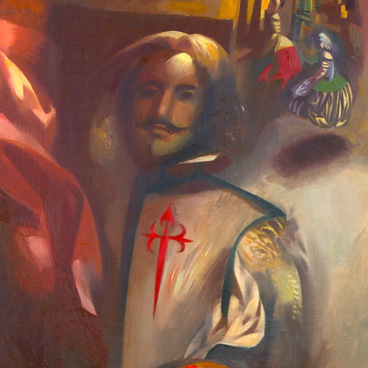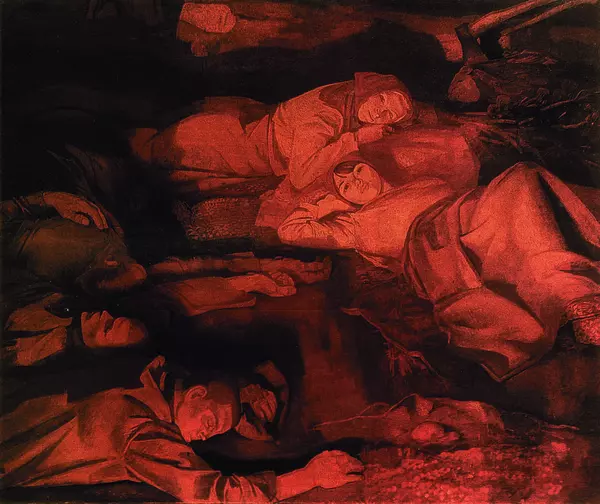The Ural painter Nikolay Chesnokov always drew inspiration and ideas for his works from nature. For example, his large 1967 painting “The Underground Wonderland. The Kungur Ice Cave” was dedicated to one of the natural wonders of the Perm region.
The Kungur Ice Cave is one of the most popular tourist landmarks in the Ural region. Its history is unique. Legend has it that the first settlers of Kungur used to hide in this cave from Tatar and Bashkir raids in the 17th century. The scientific exploration of this area commenced in 1703 when Semyon Remezov made the first sketch of the cave’s grottoes. Later, Vasily Tatishchev created a detailed map of the cave and described its origin.
The exploration of the cave advanced in the 20th century with the help of Alexander Khlebnikov, the grandson of the famous Russian scientist, ethnographer, writer, traveler, and biographer Kirill Khlebnikov. In 1914, Alexander Khlebnikov leased a plot of land near the cave from the local peasant community. He became the first keeper of the cave, studied its grottoes, and cleared the passages. He also welcomed the first tourists and conducted guided cave tours until 1954. One of the grottoes of the Kungur Ice Cave was named after Khlebnikov to celebrate his contribution to popularizing the natural wonder.
The Kungur Ice Cave is formed by 58 grottoes with various beautiful-sounding names, including the Coral, the Meteor, the Ruins, the Seabed, the Giant, and the Grotto of the Geographers. Other unique names include the Wet Tussock, the Scandinavian, the Dante, and the Cross Grotto.
In his painting, Nikolay Chesnokov depicted the famous Diamond Grotto, which the tourists visit when they first enter the Kungur Ice Cave. The temperature in this cave does not rise above -5 °C even on the hottest days of summer. The roof of the Diamond Grotto is covered with an incredible pattern of large ice crystals, which reach their largest size in March. This is the most beautiful time of the year in the Diamond Grotto when the stalactites provide multiple reflections of artificial light, and the cave’s roof looks as if it is scattered with diamonds. Chesnokov depicted this amazing cold beauty of the Diamond Grotto. He always enjoyed painting winter landscapes with their unique fresh color palettes. It is no wonder that Chesnokov was often referred to as the “winter artist”.
The Kungur Ice Cave is one of the most popular tourist landmarks in the Ural region. Its history is unique. Legend has it that the first settlers of Kungur used to hide in this cave from Tatar and Bashkir raids in the 17th century. The scientific exploration of this area commenced in 1703 when Semyon Remezov made the first sketch of the cave’s grottoes. Later, Vasily Tatishchev created a detailed map of the cave and described its origin.
The exploration of the cave advanced in the 20th century with the help of Alexander Khlebnikov, the grandson of the famous Russian scientist, ethnographer, writer, traveler, and biographer Kirill Khlebnikov. In 1914, Alexander Khlebnikov leased a plot of land near the cave from the local peasant community. He became the first keeper of the cave, studied its grottoes, and cleared the passages. He also welcomed the first tourists and conducted guided cave tours until 1954. One of the grottoes of the Kungur Ice Cave was named after Khlebnikov to celebrate his contribution to popularizing the natural wonder.
The Kungur Ice Cave is formed by 58 grottoes with various beautiful-sounding names, including the Coral, the Meteor, the Ruins, the Seabed, the Giant, and the Grotto of the Geographers. Other unique names include the Wet Tussock, the Scandinavian, the Dante, and the Cross Grotto.
In his painting, Nikolay Chesnokov depicted the famous Diamond Grotto, which the tourists visit when they first enter the Kungur Ice Cave. The temperature in this cave does not rise above -5 °C even on the hottest days of summer. The roof of the Diamond Grotto is covered with an incredible pattern of large ice crystals, which reach their largest size in March. This is the most beautiful time of the year in the Diamond Grotto when the stalactites provide multiple reflections of artificial light, and the cave’s roof looks as if it is scattered with diamonds. Chesnokov depicted this amazing cold beauty of the Diamond Grotto. He always enjoyed painting winter landscapes with their unique fresh color palettes. It is no wonder that Chesnokov was often referred to as the “winter artist”.



